Search Results for 'Edward VII'
15 results found.
MacDonnells of Williamsgate Street
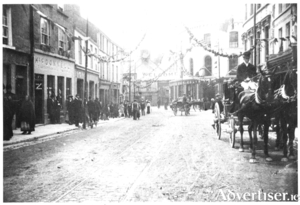
In 1904, MJ MacDonnell, Confectioner, announced the fact in the local papers, that he had just opened a TEA ROOM at Number 8, Wiilliamsgate Street where ladies and gentlemen ‘can have freshly made tea and cakes – all cakes made freshly on the premises with the purest ingredients only. Seed, Plum, Rich Plum, Madeira, Citron, Cherry, Sultana, Genoese, Pastry etc. White and Brown scones, Cream scones and Crumpets always in stock. Ice Creams in 24 hours’.
Kylemore Abbey to celebrate Heritage Week with unveiling of new historical display

Kylemore Abbey has an exciting line-up for Heritage Week next week, including the unveiling of a new display of the ceremonial parliamentary robes and coronet of the Duke of Manchester, a former owner of the abbey.
Galway postboxes

The regular use of the words “post” and “Litir” in 15th century Irish manuscripts suggests that by that time, a postal system was already in existence here. In 1657, a Bill was passed ‘for settling the postage of England, Scotland and Ireland’ which set up a Government monopoly of the service. The Galway Post Office had been established in 1653, and the network of Post Offices throughout the county gradually grew.
An outburst of unredeemed and inexplicable savagery
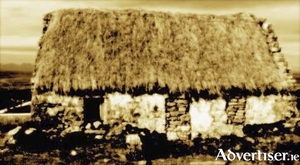
In early October 1884 a journalist from The New York Times, whom we only know by his initials HF, left Galway for Cong by steamer, in the company of Mr TP O'Connor, MP for Galway, and Mr Healy, MP for Monaghan.
‘A pale granite dream, afloat on its own reflection’
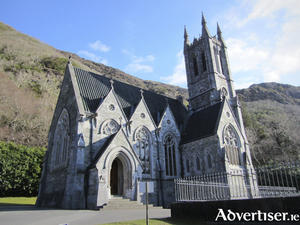
Mitchell Henry’s final days in Kylemore were sad ones. His adored wife Margaret had died at 45 years-of-age, and rested in a simple brick mausoleum in the grounds of his palatial Kylemore Castle. His political life, into which he put a great deal of personal effort, advocating on behalf of all Irish tenants the rights for them to own their own land, was out manoeuvred by Charles Stewart Parnell and the Land League. Henry described the Land League methods as ‘dishonest, demoralising and unchristian’. He probably was not surprised to lose his Galway seat in the general election of 1885. He blamed ‘Parnalite intimidation’.
O’Loughlin’s cavalry protected the king

The arrival of British royalty on Irish shores in recent times, is usually greeted with genuine interest and curiosity, and a sense of welcome and respect, while extreme nationalists have to grin and bear it.
‘A photograph will tell you a thousand things’

Tommy Holohan is a living history of Galway city, and more particularly, a living history of one of its most unique areas - The Claddagh - and his passion for both has led him to discover and collect an extraordinary array of photographs, postcards, and documents charting the evolution of the city.
The Railway Hotel
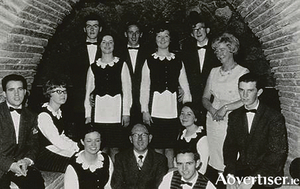
This ancient site on the southern end of what we now know as Eyre Square was occupied by a Knights Templars convent in the 13th century. By the 17th century Robert Martin had a large house on the site, but this was taken from him by the Cromwellians and given to Edward Eyre. The Eyre family held on to the property and on May 12, 1712, Edward Eyre, son of the above, presented the land in front of his house to the corporation as a place of recreation for the people of Galway. In 1827, a man named Atkinson built houses at this end of the Square and by 1845, the site was occupied by a block of tenements owned by Fr Peter Daly.
From stone forts to the revolution - Galway’s story in one place
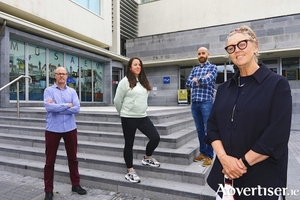
PERSONAL BELONGINGS of IRA volunteer Seamus Quirk and Fr Michael Griffin; Bronze Age artefacts from Dún Aonghasa; the myths of the River Corrib; and an exploration of Gaelic Ireland - there is a wealth of local and Irish history to be experienced at the Galway City Museum.
Shop Street, 1903
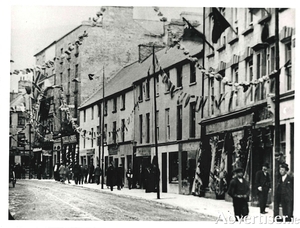
This was Shop Street, Galway’s main street, decorated for the visit of Edward VII in 1903. The poles along the footpath were especially erected to carry bunting and decorations and many buildings had their own flags and other forms of decoration. It was a big occasion in the city. The prince came into the station on the railway from Clifden, was taken by horse and carriage around the Square, through the streets, and around by Raven Terrace and back to the Docks where his royal yacht was waiting.

